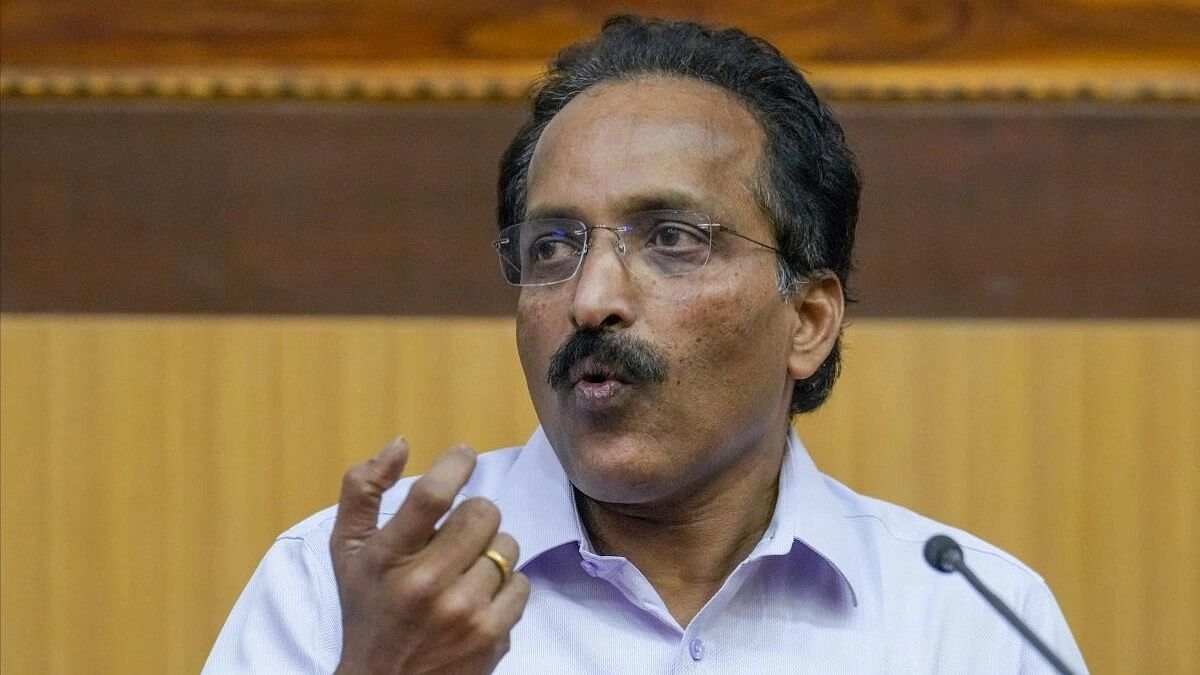
ISRO Chairman S Somanath
Credit: PTI Photo
Indian Space Research Organisation (ISRO) chief S Somanath on Sunday said the motive behind building a second launch pad in Tamil Nadu’s Thoothukudi district is not to “replace” Sriharikota but to create an alternative site to support launches of small rockets and satellites.
Addressing a session at the third edition of the Tamil Nadu Global Investors Meet, Somanath said the soft landing of Chandrayaan-3 on the south polar region of the moon was not a mere scientific event but became an emotional issue with youngsters drawing immense inspiration from the mission and aspiring to work with ISRO.
“The success of the mission created an emotional exuberance in the minds of youngsters and children, and showcased it to everybody. Now, there is so much enthusiasm among youngsters who want to be astrophysicists and they want to join ISRO and work on space technology,” Somanath said.
He added that Chandrayaan-3 was a great example of how an event like this can create a “major impact in the minds of people” if accomplishments are put in front of the masses appropriately.
He also said the space agency undertook a massive exercise to find out what went wrong in the Chandrayaan-2 mission that crash-landed on the moon before building the satellite for the third unmanned mission which was a runaway success.
On Gaganyaan, Somanath said 2024 will be a year of preparation for the country’s first manned mission to space while stressing that the agency plans to complete all unmanned flights by the end of this year. “The target is to complete the mission by 2025. While the target or schedule is important, safety is more important,” Somanath added.
On Kulasekarapattinam, the ISRO chief said the space agency felt the need for an alternative launch site that is geographically advantageous for the country. The new launchpad will help ISRO save fuel and have a dedicated space for launching Small Satellite Launch Vehicles (SSLV).
A spaceport at Kulasekarapattinam will help save fuel as satellites launched from here can directly travel south unlike those launched from Sriharikota which fly in the southeast direction after liftoff from the Sathish Dhawan Space Centre to avoid flying over Sri Lanka and take a sharp manoeuvre towards the South Pole.
“We need to support the emerging launch actors, especially people who are building small satellites and rockets. It will give ISRO higher payload capability and enable lower turnaround time for the launches,” he said.
The state government has almost completed the land acquisition for the Rs 950-crore project by acquiring over 2,200 of the 2,300 acres of land sought by ISRO in Padukkapathu, Pallakurichi, and Mathavankurichi villages in Kulasekarapattinam and Sathankulam taluks in Thoothukudi district.
With the global small satellite market projected to grow at a rapid pace across the globe, the state government is mulling launching a Space Industrial Park and a Propellants Park to attract space-related manufacturing and research and development (R&D) firms.